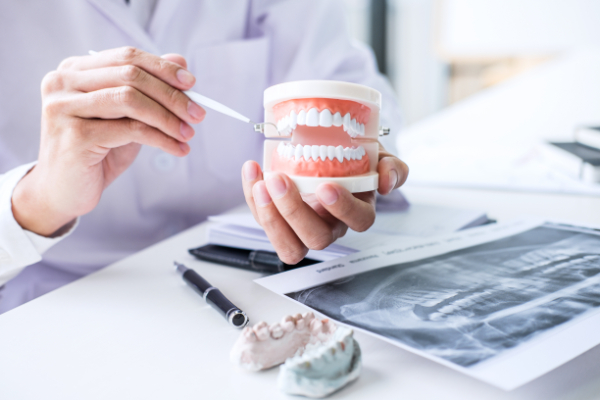Treating a chipped tooth is important, even if the damage is small. A general dentist can treat this type of dental issue. The solution to the chipping will depend on the degree of damage. Here are the details on how a dentist can repair a chipped tooth.
Dental bonding
The dentist can offer this minimally invasive and inexpensive way to restore a chipped tooth. Choosing the right shade of composite resin is necessary. The dentist will clean and roughen the area a little before placing the material on it. Shaping and polishing the resin will come next. A curing light will harden the material.
Many people prefer dental bonding for a chipped tooth because it is painless and quick. The dentist may not even need to numb the tooth and the area around it. Most patients may need to see the dentist again after three to 10 years. Avoiding hard foods can prevent premature damage to the bonding material.
Dental implants
A large, untreated dental damage can result in more serious issues. This type of chipped tooth makes the pulp more vulnerable to bacterial infection. The nerve will die if bacteria damage this part of the tooth. In this case, the dentist will perform a root canal treatment. But if the damage goes beyond the pulp, the dentist will need to remove the tooth.
Extracting the tooth means replacing the tooth as soon as possible. This can prevent the neighboring teeth from shifting into the dental space. The titanium rods can help prevent gum disease and jawbone loss. The artificial crown on top of the rods takes the place of the missing tooth.
Veneers
The thin, custom shell covers the front part of the chipped tooth. Preparing the tooth involves shaving off a thin layer of the enamel. This will roughen the area and allow the shell to stick better to the tooth. The dentist will then cement the shell in place. Shaping and polishing it will come next. Proper care and maintenance can make the veneer last for up to 20 years.
Dental crowns
A crown is a permanent dental restoration for a chipped tooth. It can cover the whole surface of the tooth. The treatment can also provide more protection and support. Dental crowns can be metal, porcelain, or a combination of both materials. The general dentist may recommend a pure porcelain crown for a damaged front tooth.
The dentist will need to shave down the tooth so that the crown can fit. Traditional crowns will need weeks to complete. Other clinics have computer-aided design and manufacturing capabilities that allow them to give dental crowns in one appointment. These same-day crowns are convenient and cause less discomfort.
Caring for a chipped tooth
A chipped tooth will need treatment right away. Seeing the dentist as soon as possible can prevent more serious dental issues. Infection may start to set in. This may lead to tooth loss later on. While waiting for an appointment for the chipped tooth, here are some ways to care for it:
- Use an over-the-counter pain reliever. A chipped tooth may affect only the enamel. This may not be painful at all. In some cases, the damage may reach the pulp, which contains the nerves and blood vessels. This will cause severe pain.
- Rinse the mouth with warm salt water. The mouth is an ideal place for bacteria to thrive. It has bad bacteria that can take over the mouth under the right conditions. Regular rinsing with warm salt water can help kill bad bacteria. Salt has antifungal, antiviral, and antibacterial properties.
- Cover the jagged and sharp edges of the chipped tooth. Some teeth leave behind a smooth edge after breaking. Others leave irregular edges. That can cut the tongue or lip. The patient can cover these edges with sugar-free gum or dental wax. That way, it cannot harm the soft tissues of the mouth.
- Be on a soft diet. Eating hard foods can worsen the damage to the chipped tooth. Stay on a soft diet until the dental appointment. Mashed potatoes, soft fruits, and soups will be ideal in the meantime.
- Stop the bleeding. Gums or the chipped tooth itself may bleed after the injury. Applying pressure with a cold compress can reduce swelling and even stop the bleeding. There could be a need for stitches if the bleeding does not stop.
- If possible, keep the broken pieces. A chipped tooth with a large break can leave visible pieces. Keep them in a small piece of wet gauze or soak them in some milk. Bring them to the dental appointment. The dentist may reattach them to the chipped tooth.
A dentist can treat your chipped tooth and prevent further damage
Even if your chipped tooth has minor damage, you must seek treatment right away. The damage will leave your teeth and gums vulnerable to more damage. It could even lead to an infection that can cause tooth loss. Working with your dentist can correct your dental damage and improve your quality of life.
Request an appointment or call Woodside Dental Care at (718) 682-7559 for an appointment in our Queens office.

